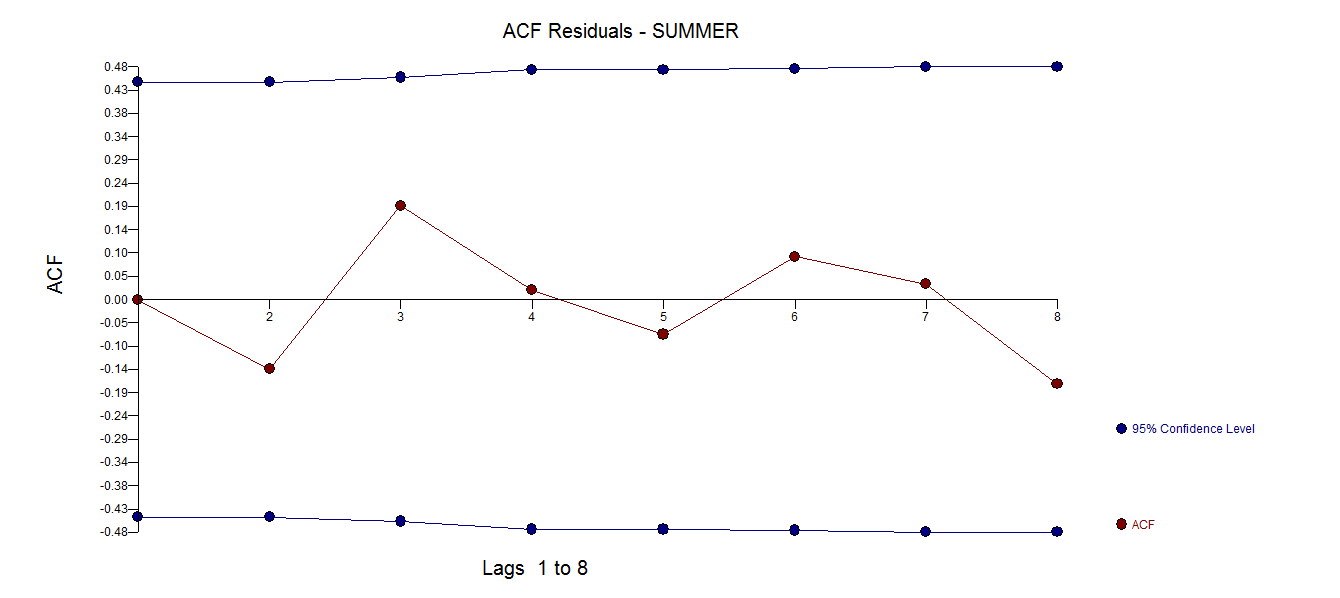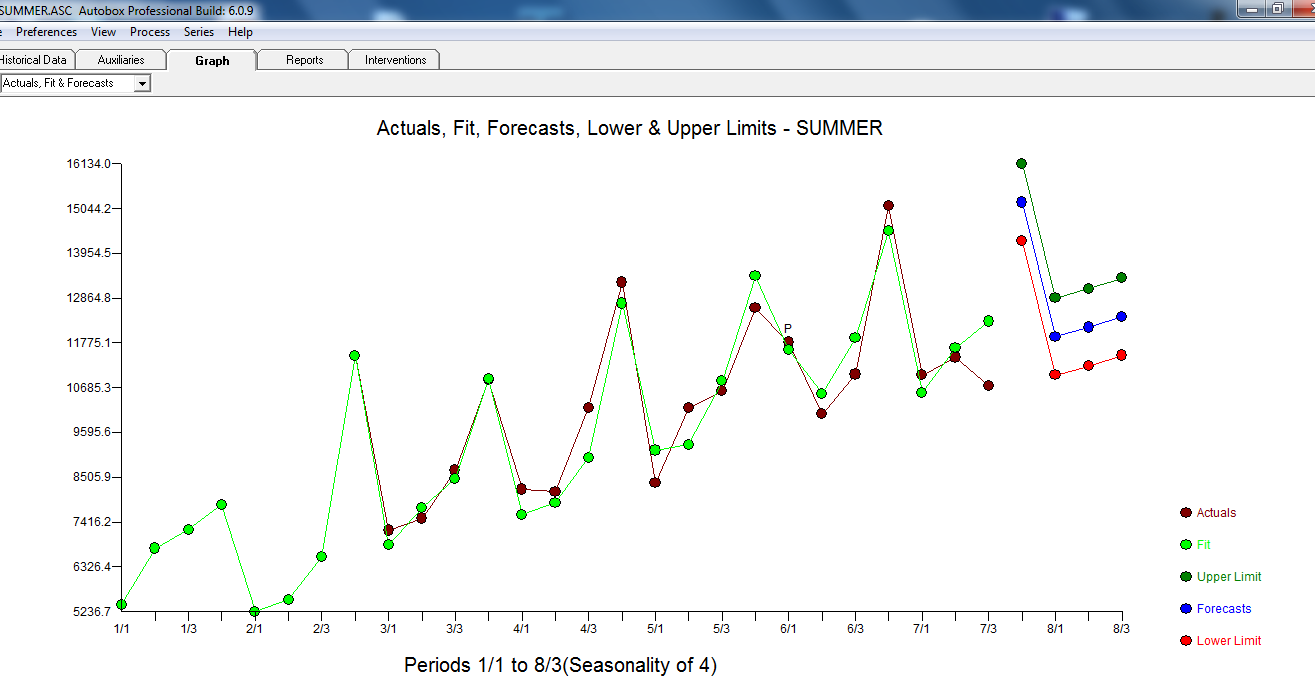Power Transformations found via a Box-Cox test http://onlinestatbook.com/2/transformations/box-cox.html are useful/correct when a linear relationship is found between the expected value and the variability of the model errors. It has little to do with the variability of the original series. The range of transformations is from none to a reciprocal. Care should be taken to account for pulse outliers as untreated they can distort the Box-Cox conclusions. Furthermore note that error variance may also change in discrete steps quite free of the expected value . The appropriate remedy in this case is to Generalized Least Squares or as it is often known as Weighted Least Squares.
You might look very closely at my response to Seeking certain type of ARIMA explanationSeeking certain type of ARIMA explanation
UPON RECEIPT OF DATA ( :some 27 quarterly observations starting at 2008 q1
:some 27 quarterly observations starting at 2008 q1
The ACF of the original series suggests a fairly strong seasonal structure. AUTOBOX automatically identified a model  and shown here
and shown here  which yielded an ACF of the error process suggesting model sufficiency
which yielded an ACF of the error process suggesting model sufficiency  . The model includes an identified intervention at period 21 (2013 quarter 1 ) of the 27 observations. A plot of the actual and the cleansed highlights the anomaly.
. The model includes an identified intervention at period 21 (2013 quarter 1 ) of the 27 observations. A plot of the actual and the cleansed highlights the anomaly. The actual/fit/forecast graph is here
The actual/fit/forecast graph is here  with forecasts here
with forecasts here  . In summary there was no need for any variance stabilization transformation for this data set. The optimal box-cox coefficient requires a model and in this case is 1.0. If you don't specify a model as is possible with boxcoxfit then in the absence of a good ARIMA structure and the identified anomaly at period 21 you might then get a lambda like .52 which is probably the result of an incorrect model.
. In summary there was no need for any variance stabilization transformation for this data set. The optimal box-cox coefficient requires a model and in this case is 1.0. If you don't specify a model as is possible with boxcoxfit then in the absence of a good ARIMA structure and the identified anomaly at period 21 you might then get a lambda like .52 which is probably the result of an incorrect model.
